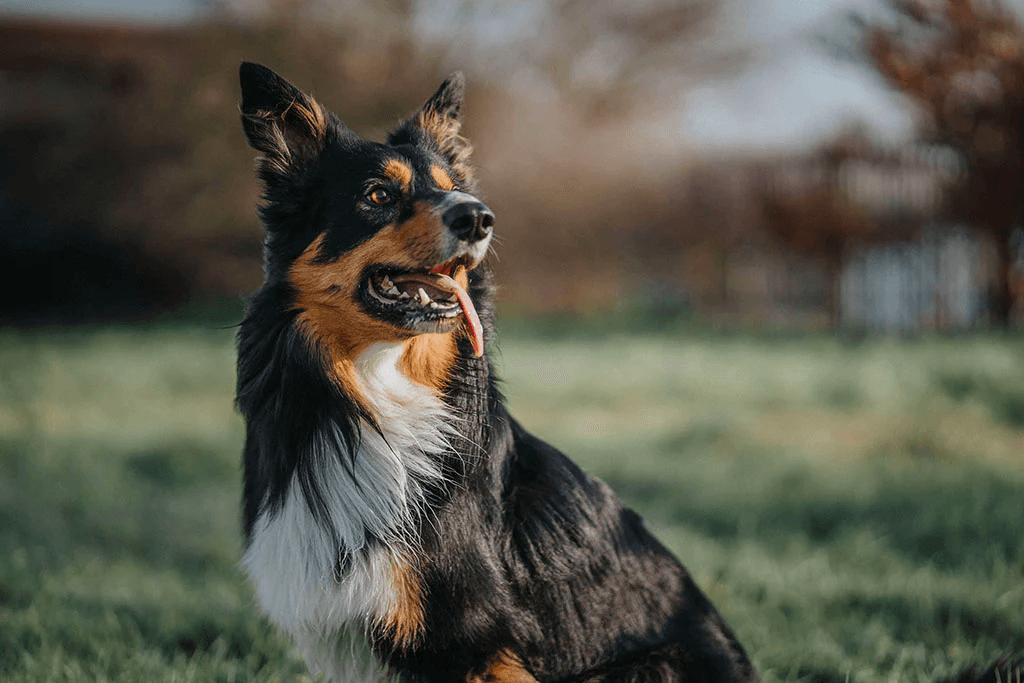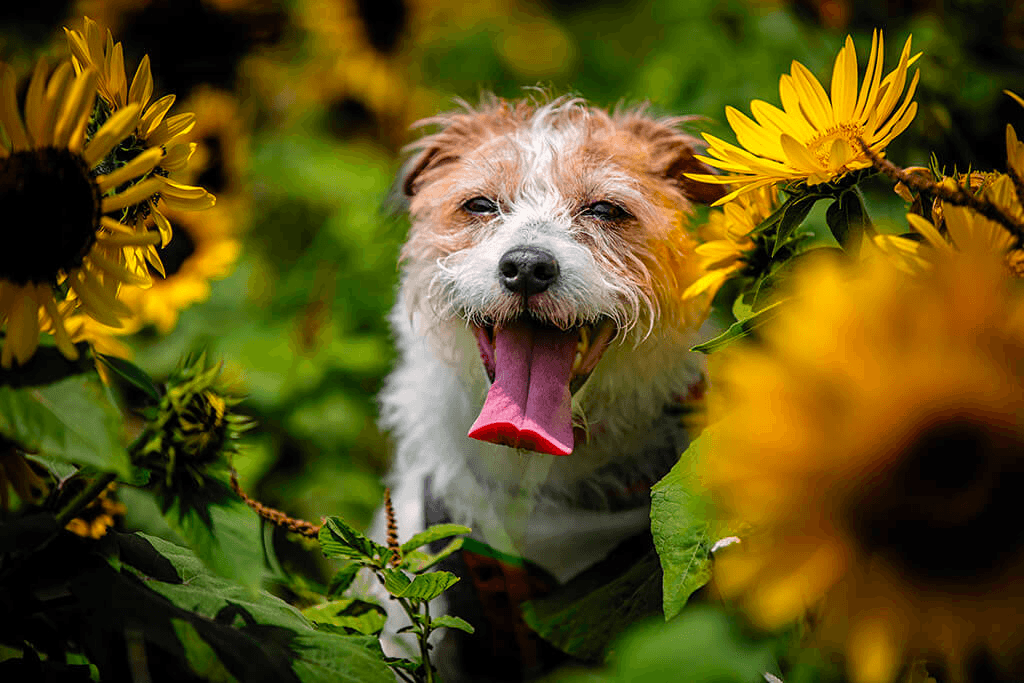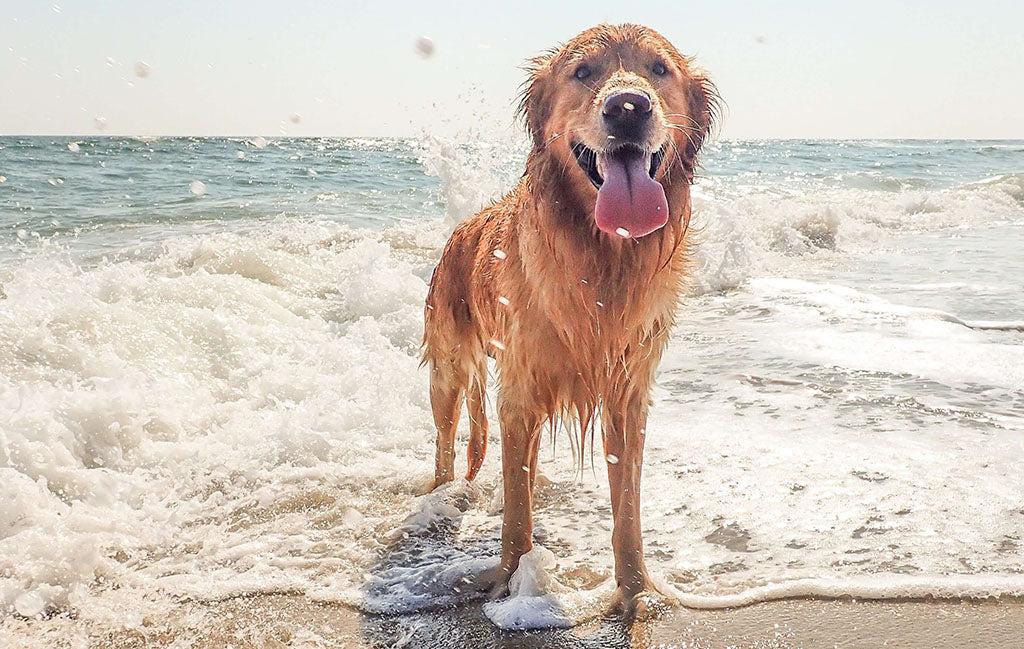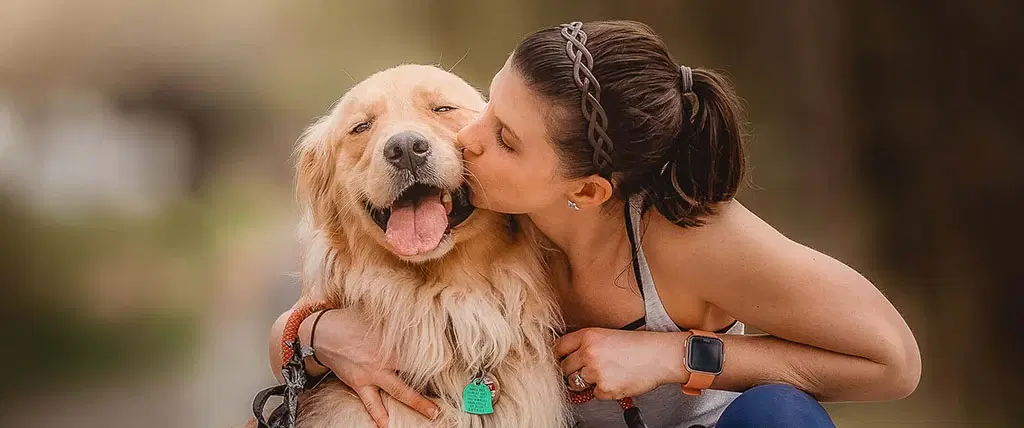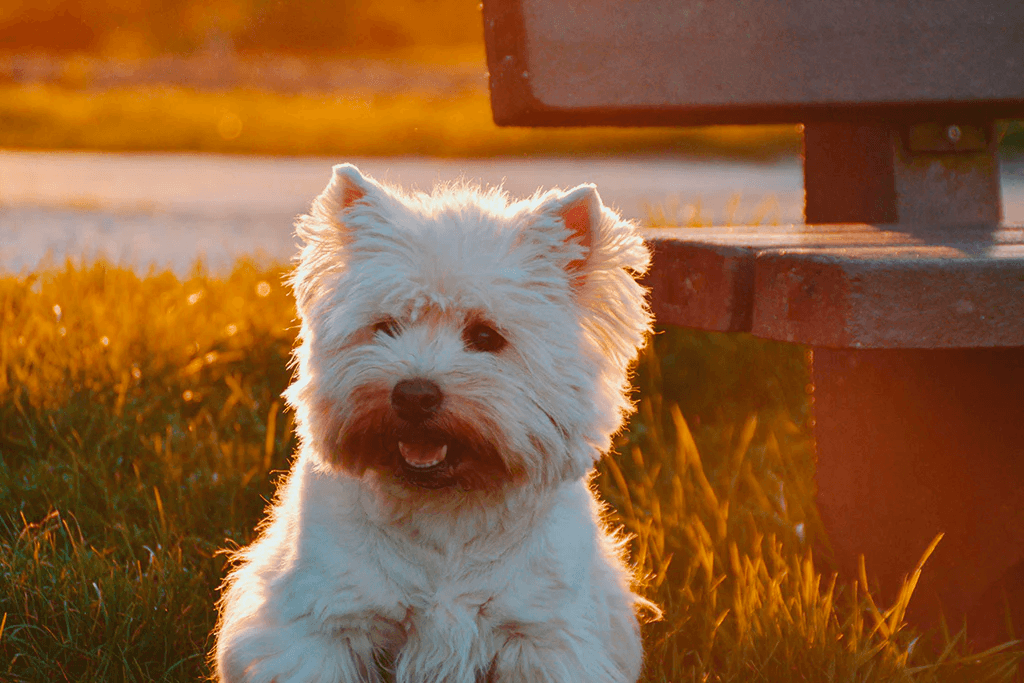“My dog is drooling!?” If you’re concerned about dog drooling, this blog looks at the reasons why dogs drool. We’ll find out what causes dog drooling, whether there are home remedies, and how much drooling is excessive.
Why Do Dogs Drool?

Key facts:
- Certain dog breeds are more prone to excessive drooling due to their anatomical features.
- It’s normal for your dog to salivate and drool when they smell something tasty or are anticipating food.
- Drooling is a normal behavior, however, hypersalivation can be an indicator of a more serious problem.
Drooling has been made somewhat of a charming trait in dogs when portrayed in movies. Take Fang, the Neapolitan Mastiff in the Harry Potter franchise – his comical, cowardly, saliva-heavy facial expressions provide light relief.
But a tiny bit of dribble is a different matter when you’re the owner of a drooling dog.
Dog Drool and Saliva: Understanding the Basics
Saliva is made up of 98% water and is essential for your pet’s overall health. The other 2% of saliva is made up of enzymes, electrolytes, mucous, and antibacterial compounds – one enzyme in particular (amylase) triggers the entire digestive process.
Amylase helps break down food, while saliva as a whole keeps the mouth moist, softens food, and enables safe, comfortable swallowing. Saliva also protects tooth enamel and helps reduce the likelihood of gum disease by aiding in the removal of food particles from the teeth.
When it comes to dog drool, a certain amount is normal and can be triggered by various situations, such as anticipation of food, excitement, or even certain smells. However, while the production of saliva is normal, an excessive amount is not.
Dog Breeds That Drool A Lot
Some breeds are notorious for their excessive drooling, a trait that can be endearing or inconvenient, depending on your perspective. Drooling, or salivation, is a natural process in dogs, but certain breeds are more prone to it due to their anatomical features. Here are some of the top drool-prone breeds and the reasons behind their slobbery nature:
1. Saint Bernard
Saint Bernards are famous for their gentle giant demeanor and excessive drooling—just think of the 1992 movie Beethoven to get a good idea. Their large jowls and loose lips contribute to the constant flow of saliva, especially after eating or drinking.
2. Mastiff
Mastiffs, including English Mastiffs, Bullmastiffs, and Neapolitan Mastiffs, are heavy droolers. These breeds have loose skin around their mouths and large, heavy lips that can trap saliva, causing it to spill out when they shake their heads.
3. Bloodhound
Known for their incredible sense of smell and tracking abilities, Bloodhounds also produce a significant amount of drool. Their long, droopy ears and loose skin around the mouth are designed to help with scent tracking, but those lips also contribute to their slobbering.
4. Newfoundland
Newfoundlands, with their massive size and sweet disposition, are another breed prone to drooling. Their large heads and loose lips mean they often leave a trail of drool wherever they go, especially when excited or after drinking water.
5. Bulldog
Bulldogs, including English Bulldogs and French Bulldogs, are known for their adorable, wrinkled faces and their tendency to drool. The breed’s short snout and loose skin around the mouth make it difficult for them to keep saliva contained.
6. Boxer
Boxers are energetic and playful, and their drooling often matches their enthusiasm. Their broad, short heads and undershot jaw contribute to their slobbering, particularly after exercise or when they are hot.
7. Great Dane
Great Danes, one of the largest dog breeds, also rank high in the drooling department. Their massive size and loose lips mean that they produce and release a lot of saliva, especially after meals or drinking.
Understanding and preparing for a drool-prone breed can help you manage the slobber and enjoy the many wonderful qualities these breeds have to offer.

Hypersalivation in Dogs
Hypersalivation, also known as ptyalism or excessive drooling, occurs when a dog produces more saliva than usual. While some drooling is normal in many breeds, hypersalivation can be a sign of an underlying issue that needs attention.
Other Symptoms to Watch For
In addition to excessive drooling, hypersalivation may be accompanied by other symptoms indicating an underlying problem:
- Bad breath
- Swelling or redness in the mouth
- Difficulty eating or reluctance to eat or drink
- Vomiting or retching
- Lethargy or behavioral changes
Why Is My Dog Drooling So Much? 18 Common Causes
If your dog is drooling noticeably, where it’s overloading the mouth, this means so much is being produced that your dog is not able to swallow it all. Hypersalivation or excessive drooling can be caused by:
1. Excitement or Anxiousness
Some doggies start salivating when they get excited, agitated, or nervous. Stressful situations, such as trips to the vet or separation anxiety, can trigger hypersalivation and drooling.
2. Food Response
Like humans, when our dogs smell something delicious, their bodies may start producing saliva in anticipation of a tasty treat.
3. Nausea
If your pooch gets car sick or is feeling poorly, this may cause the salivary glands to start overworking and cause drool. Motion sickness, gastrointestinal diseases, or other stomach issues can also lead to hypersalivation.
4. An Injury
If your dog has an ulcer, a cut, or has burned their mouth this may cause the body to produce excess saliva.
5. Growths
Oral tumors, warts, and other growths can trigger hyper-salivation.
6. Heatstroke
Dogs that are suffering from heatstroke will drool and pant excessively. High temperatures and vigorous activity can cause a dog to overheat, leading to excessive drooling as the body tries to cool down.
7. Breed Predisposition
As mentioned above, some breeds have saggy lips and are renowned for their drooling as their mouth isn’t physically effective at holding saliva in.

And there are always some individual dogs with the same problem, even if they’re of a different breed.
Dr. Jamie Clanin
8. Caustic Agents
If your dog licks or consumes something acidic (like lemon juice) or caustic (like cleaning agents), this can irritate the mouth lining and cause them to dribble.
9. Dental Issues
Oral health discomforts like the build-up of tartar can trigger drooling in dogs. Tooth decay, gum disease, infections, and inflammation in the mouth can stimulate excessive saliva production.
10. A Foreign Body
Your dog may have a stick or some plant remnants stuck in their mouth. This is quite a common cause of drooling in dogs, so check their mouth out for things that shouldn’t be there if your dog is drooling.
11. Respiratory Infections
Upper respiratory infections can cause difficulty swallowing, leading to drooling.
12. Nasal Congestion
Blockages or infections in the nasal passages can result in drooling as the dog is using their mouth to breathe and will not close it to swallow as often.
13. A Gastrointestinal Issue
Acid reflux can send unwanted fluid back up the esophagus (throat) and initiate hyper-salivation, and conditions like an enlarged esophagus and hiatal hernias (a hole in the diaphragm that allows the stomach to slip into the chest) can do the same thing.
14. Neurological Disorders
Issues affecting the nerves that control the salivary glands or tongue can lead to excessive drooling. Certain neurological conditions, including seizures, can result in hypersalivation.
15. Allergic Reaction
Allergic reactions can cause inflammation and irritation in the mouth, leading to increased saliva production.
16. Medications
Certain medications might make a dog drool more than usual.

This is usually due to a bitter taste, not because of any danger that medication poses.
Dr. Jamie Clanin
17. Infectious Diseases
Diseases like rabies and distemper can cause excessive drooling.
18. Toxins
Exposure to toxins can cause a dog to drool excessively. Ingesting toxic substances, including certain plants, chemicals, or human foods, can cause excessive drooling.

What to Do if Your Dog is Drooling
If you’re concerned about your dog’s drooling, it is important to have them assessed by a veterinarian to rule out any health issues. Your veterinarian can often intervene and treat the underlying cause of excessive drooling in dogs. Diagnosis and treatment options may include:
- Dental Issues: Treatment might involve professional teeth cleaning or addressing dental diseases.
- Gastrointestinal Problems: Medication or dietary changes can help resolve issues like acid reflux or infections.
- Infections or Allergies: Antibiotics, antihistamines, or other medications might be prescribed to treat infections or allergic reactions.
- Foreign Objects or Injuries: The vet may remove any foreign objects stuck in the mouth or treat injuries that are causing discomfort.
- Heatstroke or Toxin Ingestion: Immediate medical treatment to manage symptoms and prevent further complications.
Prompt veterinary care can make a significant difference in your dog’s health and comfort. Regular check-ups and timely intervention can help ensure any underlying issues are treated effectively, keeping your furry friend happy and healthy.
Home Remedies For Dog Drooling
If you own a dog breed that is predisposed to drooling, there’s not a lot you can do other than embrace it – they can’t help it if their mouth is shaped the way it is! And hey, it is only a bit of drool!
There are some things you can do to help manage excessive drooling.
Practice At-Home Dental Care
It’s important for your dog’s overall health to stay on top of their oral hygiene and dental care every day. Bacteria build-up in the mouth could make its way into the body and cause more serious complications. So, as well as preventing drooling, good oral care can also help support the health and well-being of your dog.
Feed Smaller, More Frequent Meals
If your dog’s drooling is related to gastrointestinal issues or nausea, try feeding smaller, more frequent meals. This can help manage their digestive health and reduce the likelihood of drooling.
Consider Calming Aids
If your dog’s drooling is triggered by nerves or car sickness, you can consider doggy calming aids or discuss the issue with your vet. There are various calming supplements, products, and medications designed to help reduce anxiety in dogs.
Dog-Proof Your Home
If you have a trash-curious pet or a dog that likes to try to put everything in their mouth, make sure you keep harmful substances locked and out of the way. You could also consider baby-locking your trash can if Fido’s one for rummaging. This will prevent them from tasting things they shouldn’t, which can provoke hypersalivation. Remember to check their mouths regularly for objects (like fir cones or sticks) that shouldn’t be hanging out in there, too!
Keep Dogs Cool and Hydrated
Make sure your dog has shade and clean, fresh water accessible to them at all times to help prevent heatstroke, which not only causes drooling but can be life-threatening. Keeping your dog cool and hydrated is essential, especially in hot weather. If you have a short-faced dog like a Bulldog, avoid letting them be outside for long when it is hot outside.
Provide Training and Socialization
Proper training and socialization can help reduce stress in dogs. A well-socialized dog is less likely to experience anxiety, which can be a trigger for excessive drooling. Training can also help them cope better with stressful situations.
Avoid Triggers
Identify and avoid triggers that cause your dog to drool excessively. This could include avoiding car rides if they cause nausea or keeping your dog away from potential allergens. Understanding what triggers your dog’s drooling can help you manage and reduce it effectively.
By following these tips, you can help manage your dog’s drooling and ensure their overall health and well-being.
Final Thoughts on Excessive Drooling in Dogs
Understanding why dogs drool and knowing how to manage it can make life with your furry friend much more enjoyable. While some breeds are naturally more prone to drooling due to their anatomical features, excessive drooling or hypersalivation can be indicative of underlying health issues that require attention.
If your dog exhibits signs of excessive drooling accompanied by other concerning symptoms like lethargy, mouth pain, or a loss of appetite, it’s crucial to consult a veterinarian. Early intervention can help identify and treat the root cause, ensuring your dog’s comfort and well-being.
By implementing at-home remedies, such as practicing good dental hygiene, feeding smaller and more frequent meals, and avoiding known triggers, you can effectively manage your dog’s drooling. Remember, a little drool is a small price to pay for the companionship and love of your beloved pet. Embrace their quirks, keep them healthy, and enjoy the unique bond you share.
Sources
Author Weir, Malcolm DVM, MSc, MPH and Buzhardt, Lynn DVM “Dealing With Drooling” VCA Hospitals https://vcahospitals.com/know-your-pet/dealing-with-drooling
Author Geier, Elizabeth “Why Does My Dog Drool?” Rover https://www.rover.com/blog/why-does-my-dog-drool/
 B
B
